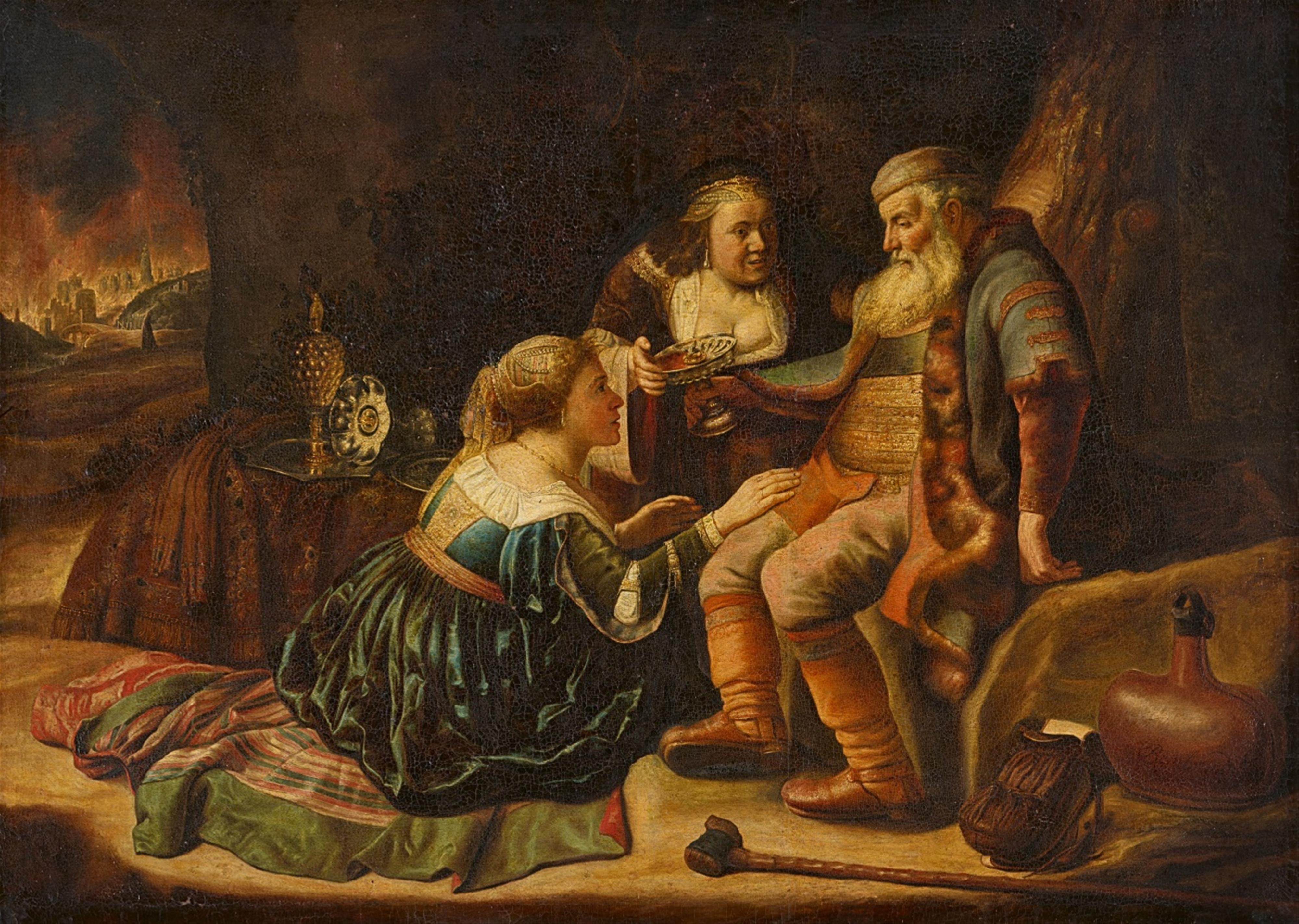Gerrit Willemsz. Horst
Lot and His Daughers
Oil on canvas. 122 x 170 cm.
Werner Sumowski first published this painting from a German aristocratic collection in the 1983 supplement to his volume on paintings of the Rembrandt School. At the time he attributed the work, which is signed “Rembrandt” in the lower right, to Jan Victors. This extremely productive painter often painted Old Testament scenes for the Jewish merchant class, which was growing rapidly in Amsterdam in the 16th century (E. Zafran: The Israel Museum News, 12, 1977, p. 92-120), and this work could also have been one of these pieces. The fact that the painting follows the composition of a drawing by Rembrandt from 1636 allowed Sumowski to date it to the late 1630s (the drawing is kept in Weimar, Benesch I, no. 128, illus. 141). The significantly younger artist Christoph Paudiss (1630-1666) also used this motif in a later large-format painting (Budapest, Szépmüvészeti Museum) - either quoting Rembrandt's drawing directly or perhaps even adapting it from the present work (Sumowski no. 1552).
In an exchange with Sumowski, Gregor Weber suggested that our picture could be attributed to Gerrit Willemsz. Horst, an artist who also worked for Rembrandt in the 1630s (Sumowski op. cit). There are arguments for both artists and perhaps the appearance of the work on the art market will provide a new opportunity for academic research.
The work depicts a scene from the Book of Genesis (11:27-31). Lot and his two daughters fled from the destruction of the city of Sodom and were the only survivors. The two women realised that now that they were entirely alone, the only way they could continue the family line was through their father. They gave him wine to drink and lay with him. Thus, Lot became both father and grandfather to their two sons Moab and Ben-Ammi, from whom the Moabite and Ammonite peoples originate.
Provenance
German aristocratic ownership.
Literature
Werner Sumowski: Gemälde der Rembrandt-Schüler, vol. VI, 1983, no. 2463.

